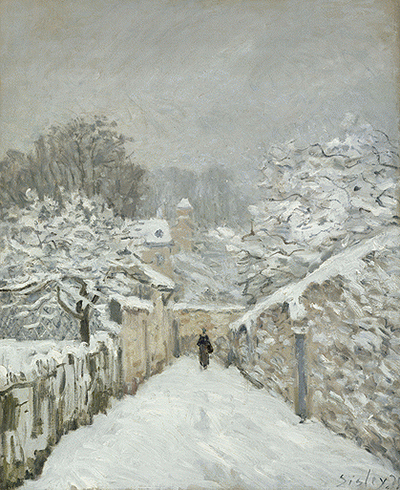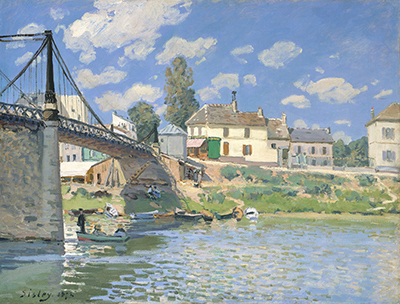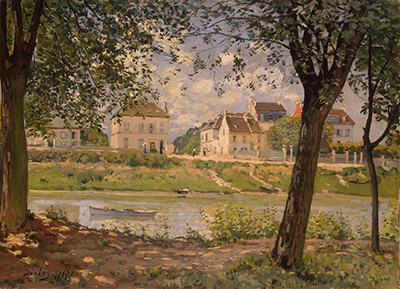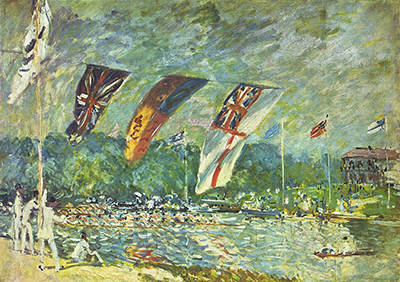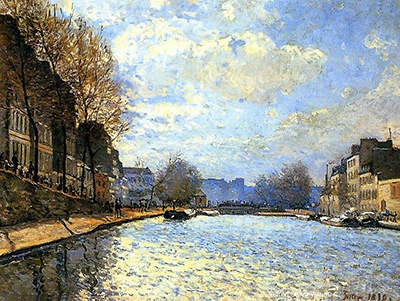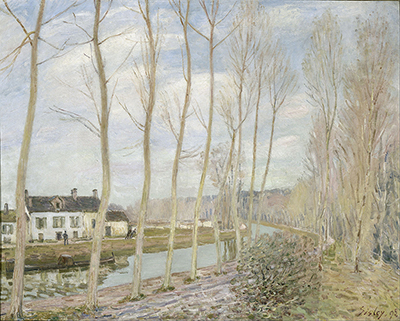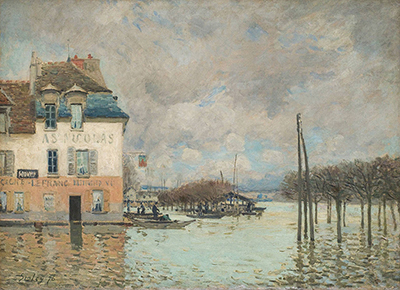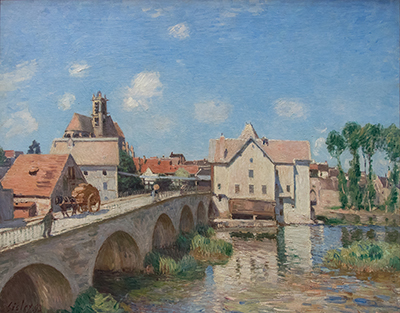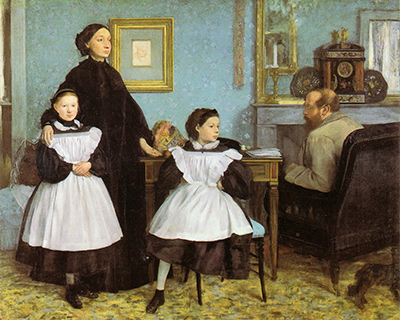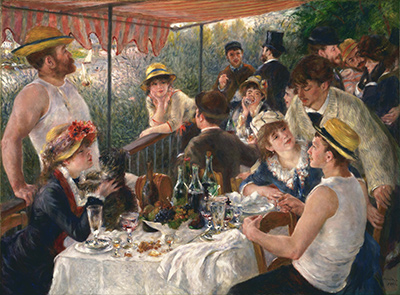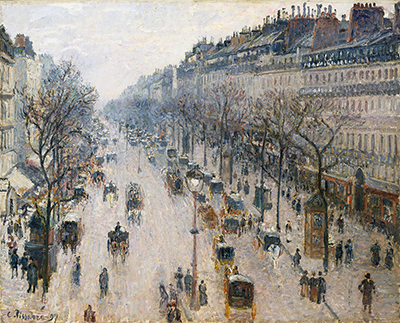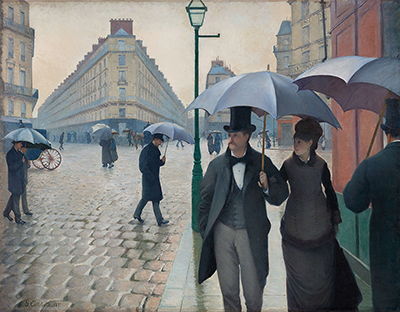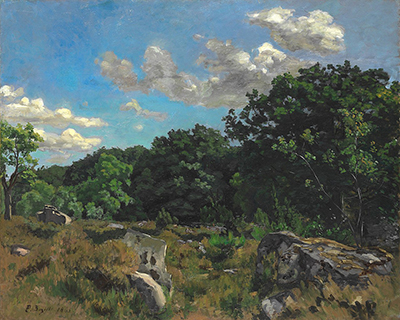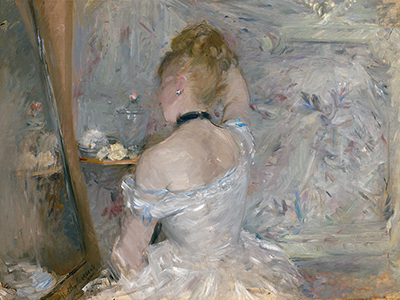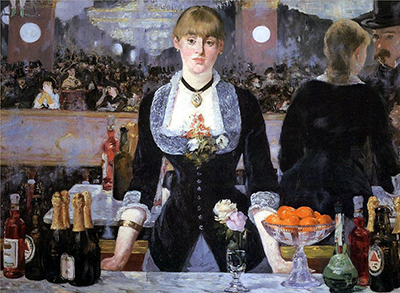Alfred Sisley was an Impressionist landscape painter. The painter was the most consistent Impressionist in his devotion to painting landscape plein air paintings (painting outdoors). Impressionism fulfilled Alfred's artistic needs, so he rarely deviated into figure painting. Learn more about his life and career in this detailed biography.
Life
Alfred was born in Paris, France to wealthy British parents. His mother was Felicia Sell, a cultivated music connoisseur and his father was William Sisley, a businessman specialising in silk. In 1857, his parents sent the then 18-year-old Alfred to London to study business; however, in 1861, he abandoned the course and went back to Paris. From 1862, Alfred studied at an influential art school called École des Beaux-Arts located in Paris within the studio of Marc-Charles-Gabriel Gleyre, a Swiss artist residing in France. Here, Alfred became acquainted with Pierre-Auguste Renoir, Claude Monet and Frédéric Bazille. Together, these artists would paint plein air paintings to capture the transitory effects of sunshine realistically.
At that time, this approach was innovative and led to paintings that were more colourful and broadly painted than what the public was used to seeing. As a result, Alfred and his three friends first had few opportunities for exhibiting and selling their work. The jury of the annual Salon often rejected their works. During the 1860s, however, Alred's father gave him an allowance, which put him in a better position than his fellow artists in terms of finance. In 1866, Alfred started a relationship with Marie Lescouezec (Eugénie Lescouezec), who was a Breton living in Paris, and together they had two children. At this time, Alfred lived close to the Café Guerbois and Avenue de Clichy, which were the gathering places of most of the Parisian painters. His works were accepted at the Paris Salon in 1868, but the exhibition and subsequent exhibitions didn't bring him critical or financial success.
In 1870, the Franco-German War started; consequently, Alfred father's silk business failed, and the artist's sole means of support was now selling his paintings. For the remainder of Alfred's life, he lived in poverty because his works didn't rise significantly in financial value until after the painter died. However, patrons backed Alfred from time to time, allowing him to make brief trips to Britain, with the first trip happening in 1874. The results of the few months that Alfred spent near London was his series of around 20 paintings showing the Upper River Thames near Molesey district.
Until 1880, Alfred worked and lived in the country located west of Paris. Later, he moved with his family to a small village located close to Moret-sur-Loing, which is located near the forest of Fontainebleau (which lies 60 kilometres southeast of Paris), where the artists of the Barbizon school used to work earlier. The gentle landscapes in this region - with their ever-changing atmosphere - were well attuned to the painter's talents. Unlike Monet, Alfred never sought the brilliantly coloured landscape of the Côte d'Azur or the drama caused by the rampaging ocean. Alfred made another brief trip to Great Britain in 1881.
In 1897, Alfred and his partner went to Britain. On 5 August, they got married at Cardiff Register Office in Wales. The couple stayed at Penarth, where Alfred painted at least 6 oil paintings of the cliffs and the sea. In mid-August, the couple went to stay at the Osborne Hotel located at Langland Bay, where Alfred produced at least 11 oils in and around Rotherslade (then known as Lady's Cove) and Langland Bay. They went back to France in October, which was Alfred's last voyage to Britain. Two of Alfred's oil paintings of Langland and Penarth are in the collection of the National Museum Cardiff, an art gallery and museum in Cardiff, wales. Alfred applied for French citizenship in 1898, but he was not successful. He made a second application, which was supported by a document from the police. Unfortunately, his illness intervened, and he remained a British citizen until his time of death.
Work
Alfred's works as a student are lost. The painter's first landscape works are sombre, coloured with pale blues, greens and dark browns. He executed many of these painting at Saint-Cloud and Marly. Little is know about Alfred's relationship with the works of John Constable and Joseph Mallord William Turner, which the painter may have seen when he visited London. Some people have suggested that the two artists may have influenced the painter's development as an Impressionist, as may have Jean-Baptiste-Camille Corot and Gustave Courbet.
The style - along with the subject matter - of modern painters Edouard Manet and Camille Pissarro inspired Alfred. Among the Impressionists, Alfred was overshadowed by Oscar-Claude Monet, whose work resembles in subject matter and style, although Alfred's effects are more sombre. The art historian Robert Rosenblum described his work as having an almost generic character, a textbook idea of a classic Impressionist painting, as Alfred's work strongly invokes atmosphere, with his skies constantly being impressive. The painter focused on landscape paintings more consistently than other Impressionist painters.
Some of his best-known works include Sand Heaps and Street in Moret, both currently in the collection of the Art Institute of Chicago. Allée des peupliers de Moret was stolen 3 times from the museum Musée des Beaux-Arts located in Nice, France at 33 Avenue des Baumettes. First in 1978 when the painting was given on loan in Marseilles; a few days later, the painting was recovered in the city's sewers. In 1998, the painting was stolen again after the curator of the museum was convicted of stealing and jailed for 5 years with 2 accomplices. In August 2007, it was stolen for the third time. On 4 June 2008, it was recovered by the French police along with 3 other paintings that were stolen from a vehicle in Marseilles. Many fake Alfred's paintings have been discovered. During his career, Alfred produced 100 pastels, 900 oil paintings and many other drawings.
Final Days
On 29 January 1899, a few months after his wife died, Alfred died in Moret-sur-Loing after battling with throat cancer. His body was buried at Moret-sur-Loing Cemetery next to his wife. Alfred is one of the most unjustly overlooked artists when it comes to Impressionism. This may be because he straddled 2 different cultures, as he was born in France to English parents and later divided his time between these two countries. For this reasons, although he was among the French Impressionism's key figures, he remained like an outsider.
More Impressionist Artists



